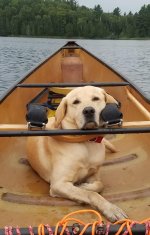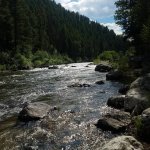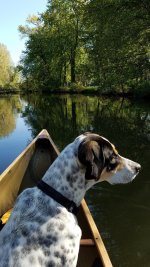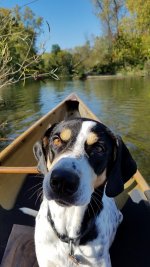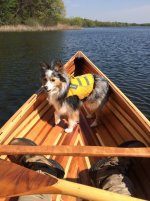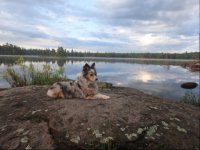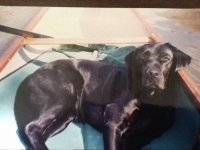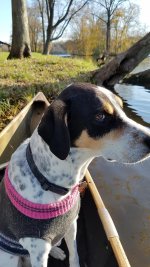My yellow lab is amazing. Best dog I will ever have. However, at (a very fit and trim) 96 pounds he is a load and takes up quite a bit of space. If I were choosing a dog with the canoe in mind, I would certainly not choose a dog larger than half of his size. The only real advantage to his size came after I purchased a set of packs for him. I have loaded him with up to 25 pounds for portages. Less for hikes longer than a mile, of course. Having two sets of packs means that on the annual double-portage BWCA trips with the extended family he is hauling up to 50 pounds.
At what age did you introduce your dog/puppy to the canoe and the tent?
And - what kind of water will you take the dog in - class i, ii, lakes only?
Were there any behavioral benchmarks that you had in mind before you took each step?
Here is a recent thread about introducing a dog to the canoe
http://www.canoetripping.net/forums/...g-to-the-canoe
Boomer was 3 before I introduced him to a canoe, but I will introduce the next one before one year. After some initial trial runs in a bare canoe, I began placing gear in the compartment with him to immobilize him somewhat. After a couple of week-long trips like this, he was much better at staying in one place after I removed the gear. Introducing him to the tent was never even a thought for me. Obedience is fundamental.
We have paddled lakes and rivers; both large and small. He has come with on 7 BWCA trips varying between 3 and 9 days. Large and small lakes with portages. Early on, he would get nervous in wind and waves but for the first year or so I kept him within reach of me so I could soothe him physically in addition to verbally. Obedience is fundamental: I'm sure he would have tipped the canoe a few times in his first year if he was less obedient. With some experience under his collar, we have tripped a couple of larger rivers and spent days on many smaller rivers, mostly for fishing but a couple times for the rapids. The only place we've ever capsized was on the west fork of the Bitterroot of Montana last July. 3 times that one day... but it was human error. Mostly I blame the poor information from the bartender the night before (or was it malice?). We probably could have kept it dry by doing more wading and lining and less beer drinking, or by being geared for whitewater instead of fishing and beer drinking, or by having any idea what we were doing. Amazingly, he never hesitated to jump back in the canoe. 100% amateur at classing whitewater here, but I believe we have ran plenty of class ii successfully on day trips. I'm sure with his experience to date he would be calmer in class iii than I am.
Benchmarks - Babysteps is the word I would use here. I made sure he was comfortable on small calm water before venturing onto bigger lakes, and comfortable on lakes with some chop before attempting any rapids.
My dog is my favorite companion and he makes every day in the wild more enjoyable. I hope you make a real bond with your next canine and enjoy many days tripping together!
